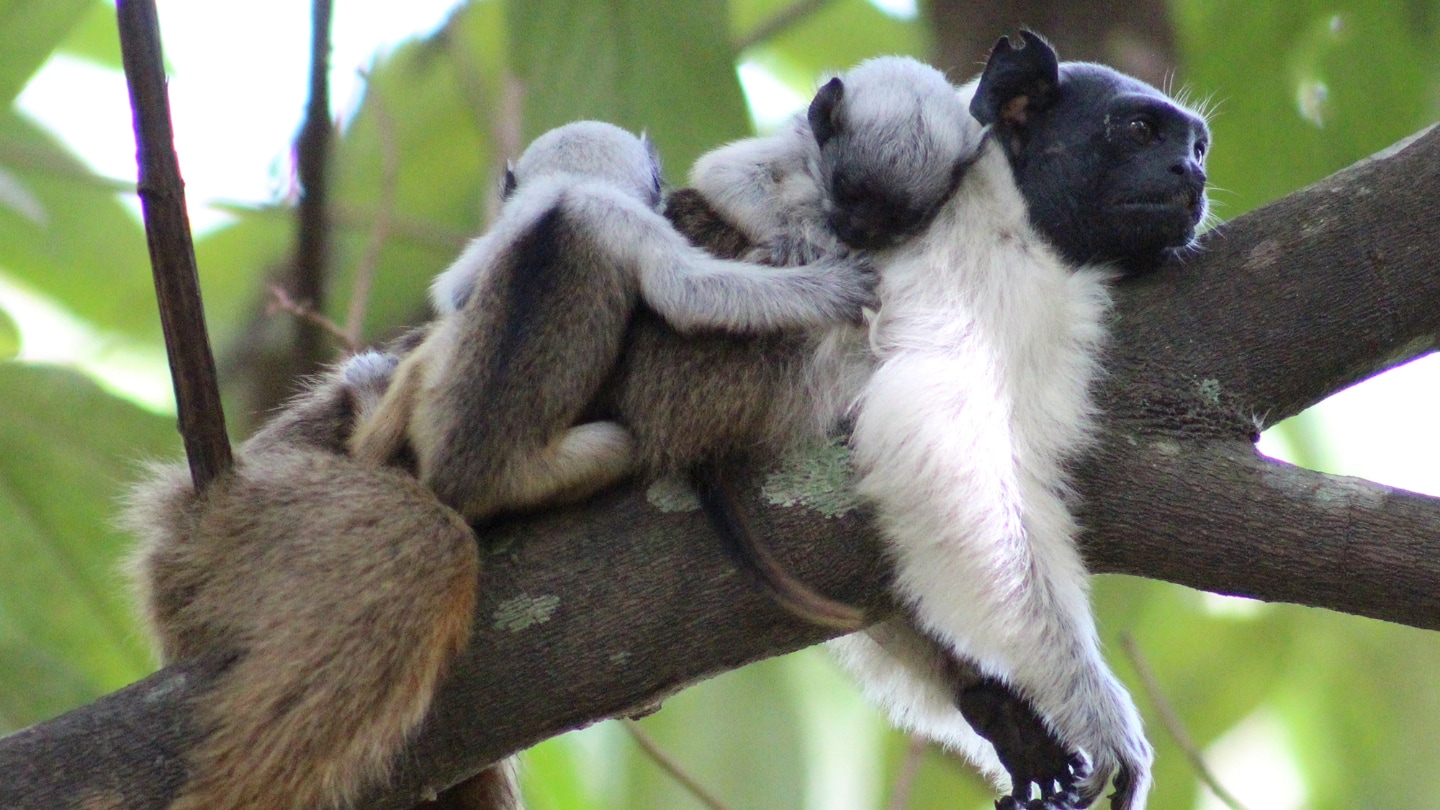Native to the Brazilian Amazon, pied tamarins have always used vocal calls to communicate. But noise pollution from car traffic and other human activity are forcing some tamarins to complement those voice calls with smell markings to alert others to dangers, researchers report September 20 in Ethology Ecology & Evolution.
Vocal communication is crucial for pied tamarins’ survival; they use it to alert other individuals to danger — an important feat considering the urban environment surrounding them. “Pied tamarins have 12 different types of vocalization with several uses, from pointing to food and cuddling each other to calling out for some danger,” says Tainara Sobroza, a biologist at the Federal University of Amazonas in Manaus.
The “danger” vocalization is particularly important for these animals, Sobroza says, as many are hit by cars and killed when they cross streets to move between forest patches. “We wanted to understand if this type of vocalization is being affected by the noise of urban environments,” she says.
Sobroza and colleagues spent about a year observing pied tamarins, which normally wander in groups of less than 10 individuals. Using radio collars, the team tracked nine groups in Manaus for 10 days each from November 2018 to December 2019. While physically following the groups, the researchers measured the loudness of the alpha female’s alert call and visually counted how often individuals rubbed their chest and lower parts on the ground and trees, spreading an odorous, waxy substance to signal which direction they were heading.
2023-10-03 06:00:00
Original from www.sciencenews.org
